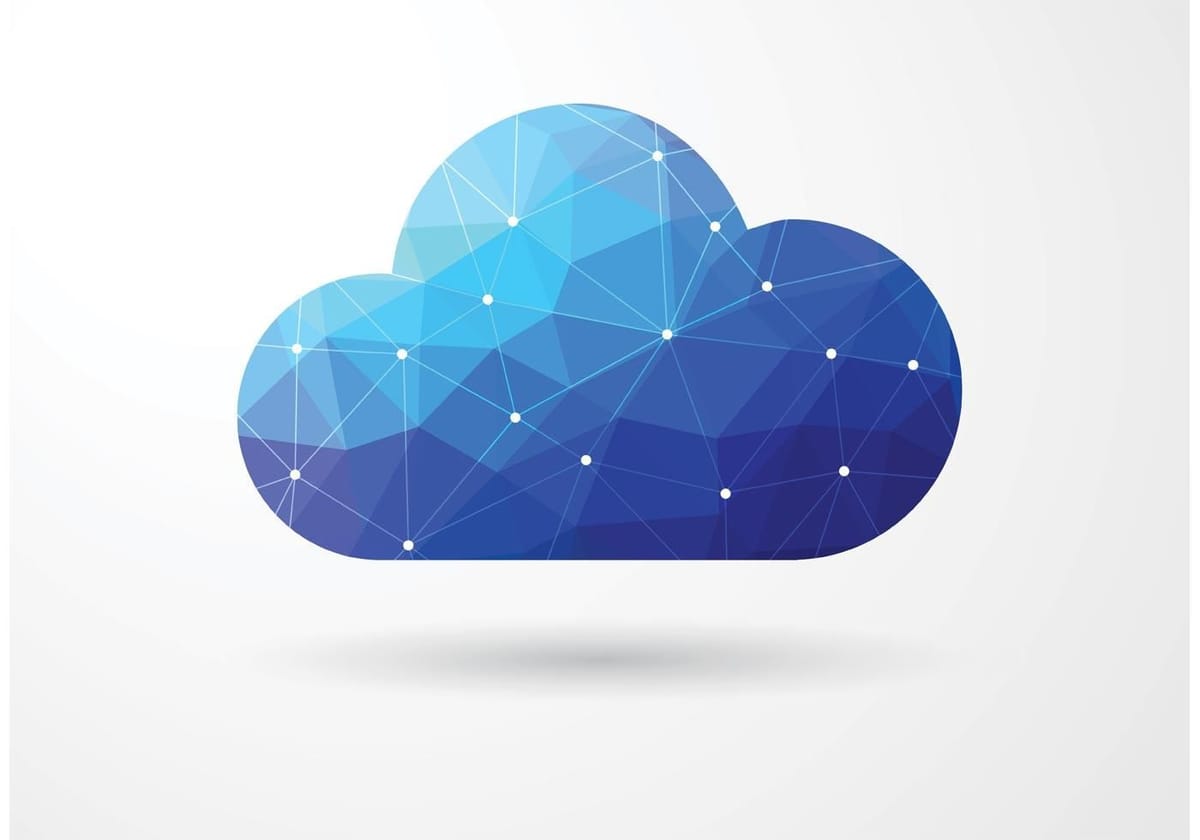Cloud Fundamentals: IP Rights
This blog post delves into key clauses and considerations in cloud service agreements that play pivotal roles in safeguarding IP rights.

In the rapidly evolving landscape of cloud computing, understanding the intricacies of how intellectual property (IP) rights are protected in cloud agreements is paramount for legal professionals. This blog post delves into key clauses and considerations in cloud service agreements that play pivotal roles in safeguarding IP rights, providing practical guidance to navigate these waters effectively.
Absence of a License Grant
Contrary to traditional software licensing agreements, cloud service agreements often do not explicitly grant a license to the cloud service provider’s (CSP's) IP. This absence might raise eyebrows, but it's strategically employed to limit the user's rights strictly to the service access and use, without transferring any ownership or extensive rights to the CSP’s underlying technologies.
In traditional software agreements, the issuance of a license was a fundamental requirement, enabling the customer to legally install and operate a copy of the software on their computer or internal network. This license acted as a formal permission, detailing the rights and limitations regarding the use, distribution, and modification of the software, thereby protecting the intellectual property of the software developer while providing the customer the necessary tools to utilize the software for their intended purposes. Contrastingly, with the advent of cloud computing, the dynamic has shifted significantly. Cloud agreements typically do not necessitate the provision of a license for software installation on the customer's hardware. Instead, they grant access to software that is hosted remotely on the CSP's servers. This model emphasizes the provision of services rather than the transfer of software copies, streamlining access to software while maintaining the CSP's control over their intellectual property. The transition from physical installations to cloud-based access reflects the evolving nature of software delivery and consumption in the digital age.
Permitted Use Clause
The permitted use clause delineates the scope of how cloud services can be used by the customer. It’s essential to scrutinize this clause to ensure the intended use of the cloud service falls within the agreed terms, thus avoiding infringement of the CSP’s IP. Overstepping this boundary can lead to legal disputes and termination of services.
The permitted use clause in cloud service agreements typically serves as a crucial mechanism to delineate the boundaries of how a customer can utilize the cloud services provided. This clause often restricts the customer to using the cloud service strictly for its own internal business operations. Such a stipulation is designed to ensure that the cloud service is employed in a manner that aligns with the intended use case envisaged by the CSP, safeguarding against potential misuse or unauthorized commercial exploitation of the service. By limiting the use to internal business purposes, the clause helps to protect the CSP's intellectual property and technological infrastructure, while also providing clear guidelines to the customer on the permissible scope of use.
Acceptable Use Policy
Closely tied to the permitted use clause, the Acceptable Use Policy (AUP) sets forth the rules and guidelines for using the CSP's services. It often includes prohibitions against using the services to infringe upon the rights of others, including IP rights. Businesses must adhere to the AUP to mitigate risks of litigation and service disruption.
The AUP is a comprehensive framework designed to govern the manner in which customers interact with and utilize the cloud service. A critical aspect of the AUP is its explicit restrictions against activities that could compromise the integrity, performance, or security of the service. For instance, the policy typically prohibits benchmarking of the service without explicit permission from the CSP, as such activities can impose undue stress on the system and potentially reveal sensitive performance data. Additionally, the AUP forbids accessing the cloud service through unauthorized means, such as penetration testing, crawling, or scraping, which could infringe upon the CSP's intellectual property or disrupt service operations. Further, customers are prohibited from attempting to circumvent the security or access controls of the cloud service, an action that poses a significant risk to the security architecture of the service and the data it holds. Lastly, the policy strictly prohibits any attempt to access other users' data or accounts, a measure critical for protecting the privacy and confidentiality of all users on the platform. These restrictions are integral to maintaining the service's reliability, security, and legal compliance, ensuring that all users benefit from a secure and efficient cloud computing environment.
Restrictions on Use Clause
This clause explicitly restricts certain uses of the cloud services, such as copying, reverse engineering, decompiling, creating derivative works or otherwise attempting to discover the underlying technology. These restrictions are critical for CSPs to protect their trade secrets and other proprietary information.
Activities such as copying, reverse engineering, decompiling, or modifying the service could potentially expose proprietary algorithms, code, or technologies that constitute the CSP’s competitive advantage and core IP. By restricting these actions, the clause directly protects the CSP’s technological assets and innovations.
Moreover, this clause serves as a legal safeguard, establishing enforceable terms that can be invoked in case of misuse or unauthorized exploitation of the CSP's services. It ensures that the CSP retains control over the distribution, modification, and usage of its services, which is critical for preserving the integrity and value of its IP. The restriction on use clause also mitigates the risk of creating unauthorized derivative works, which could dilute the CSP’s IP rights and affect its revenue and market position.
In essence, the restriction on use clause acts as a barrier against actions that could compromise the CSP's IP, ensuring that the service is used in a manner that respects the CSP's proprietary rights and interests.
Reservation of Right Clause
Through the reservation of right clause, CSPs explicitly retain ownership and all rights to their IP, except for the limited rights granted to the user under the agreement. This clause is a clear statement that, despite providing access to their services, CSPs do not relinquish their IP rights. By incorporating this clause, the CSP ensures that the customer acknowledges the CSP's exclusive ownership and rights over the service and its underlying technology, thereby preventing any implied licenses or unintended transfers of IP rights. It acts as a legal safeguard, reinforcing the CSP's control over its assets and limiting the customer's use of the service to only those rights that have been explicitly granted. It’s a vital clause for protecting CSPs’ interests and should be carefully noted by users.
Feedback Clause
Many cloud agreements include a feedback clause. Typically, these clauses stipulate that the CSP will own any rights to the feedback related to their services, which can be used to improve the service without compensation to the user. The feedback clause thus serves as a critical component of cloud service agreements, enabling continuous improvement and adaptation of services in response to user needs, while maintaining clear boundaries around IP rights.
Confidential Information and Protection Obligations
The definition of confidential information and the obligations to protect it are central to any cloud agreement. This section delineates what constitutes confidential information, including potentially the CSP’s IP and the user’s data, and outlines the measures both parties agree to undertake to protect such information from unauthorized disclosure. Ensuring robust protection for confidential information is paramount to safeguarding IP rights within the cloud ecosystem.
In essence, confidentiality obligations are a foundational element of cloud service agreements that protect the CSP's IP. They create a secure environment conducive to the exchange and protection of sensitive information, fostering a relationship based on trust and mutual respect between the CSP and its customers, all while safeguarding the CSP's innovations and proprietary assets.
Practice Notes
Protecting the CSP's IP is arguably the most crucial function of the cloud agreement, serving as the bedrock upon which the security, innovation, and competitiveness of the CSP's services rest. The provisions within the agreement that safeguard the CSP's IP—ranging from the use restrictions, confidentiality obligations, to the reservation of rights clause—are meticulously designed to prevent unauthorized use, disclosure, or replication of the CSP's proprietary technologies and services. This protection not only secures the CSP's business interests and competitive edge but also fosters an environment conducive to ongoing innovation and development, ultimately benefiting the entire ecosystem of users by ensuring the availability of high-quality, cutting-edge cloud services. Given the pivotal role these provisions play in preserving the CSP's foundational assets, any amendments that dilute their effectiveness or scope should be approached with utmost caution. Accepting changes to or watering down these critical IP protection mechanisms should only be considered as a last resort and with compelling justification, ensuring that the core objectives of IP security and service integrity are not compromised.
Conclusion
The protection of IP rights in cloud agreements requires careful consideration of various clauses that specify use rights, restrictions, and obligations of the parties involved. By paying close attention to these aspects, businesses can avoid potential pitfalls and ensure that their use of cloud services remains within the bounds of the law. As cloud computing continues to dominate the tech landscape, staying informed about these legal considerations is more important than ever.
Disclaimer
This post is for informational purposes only and does not constitute legal advice. Always consult with a qualified attorney for advice on legal matters.

Comments ()